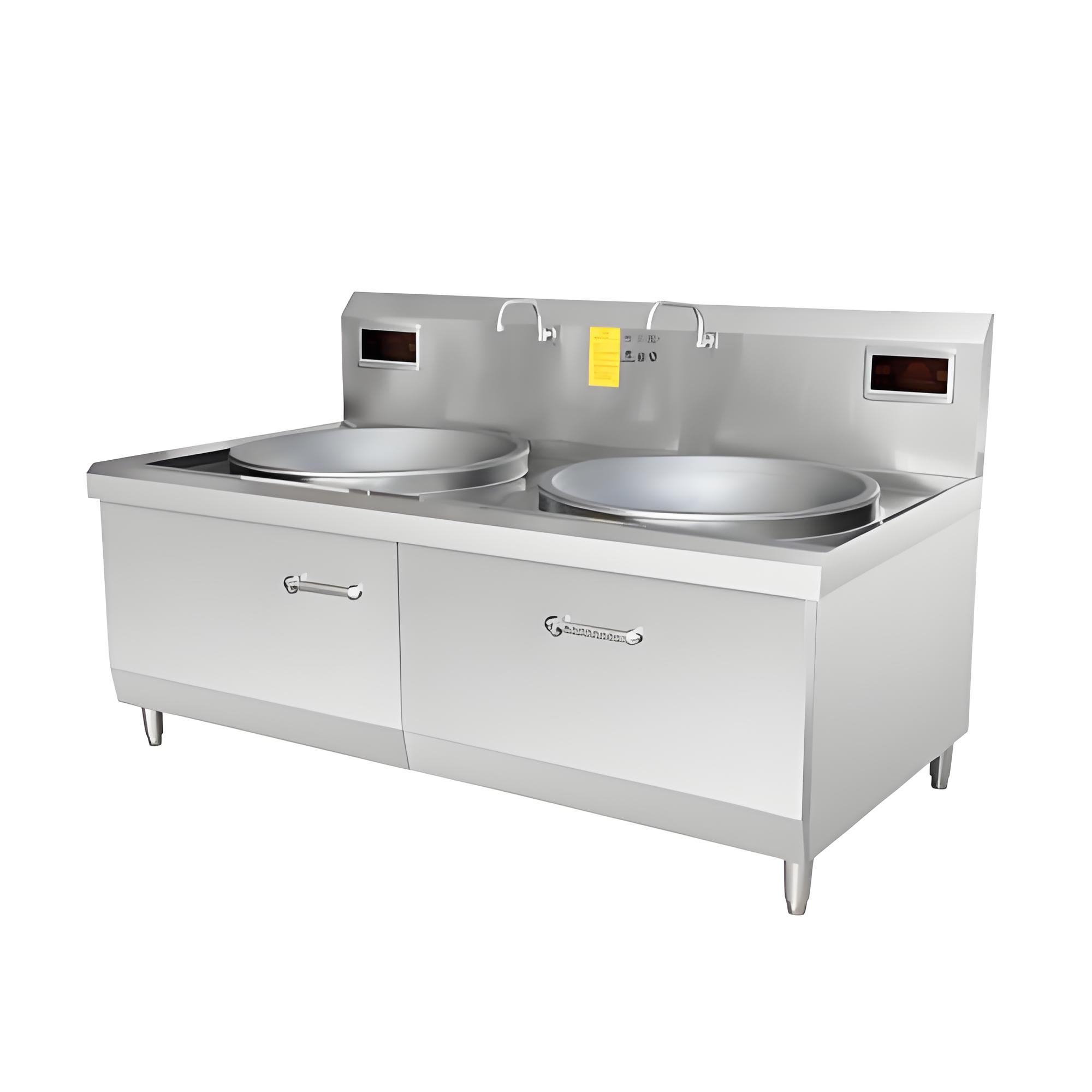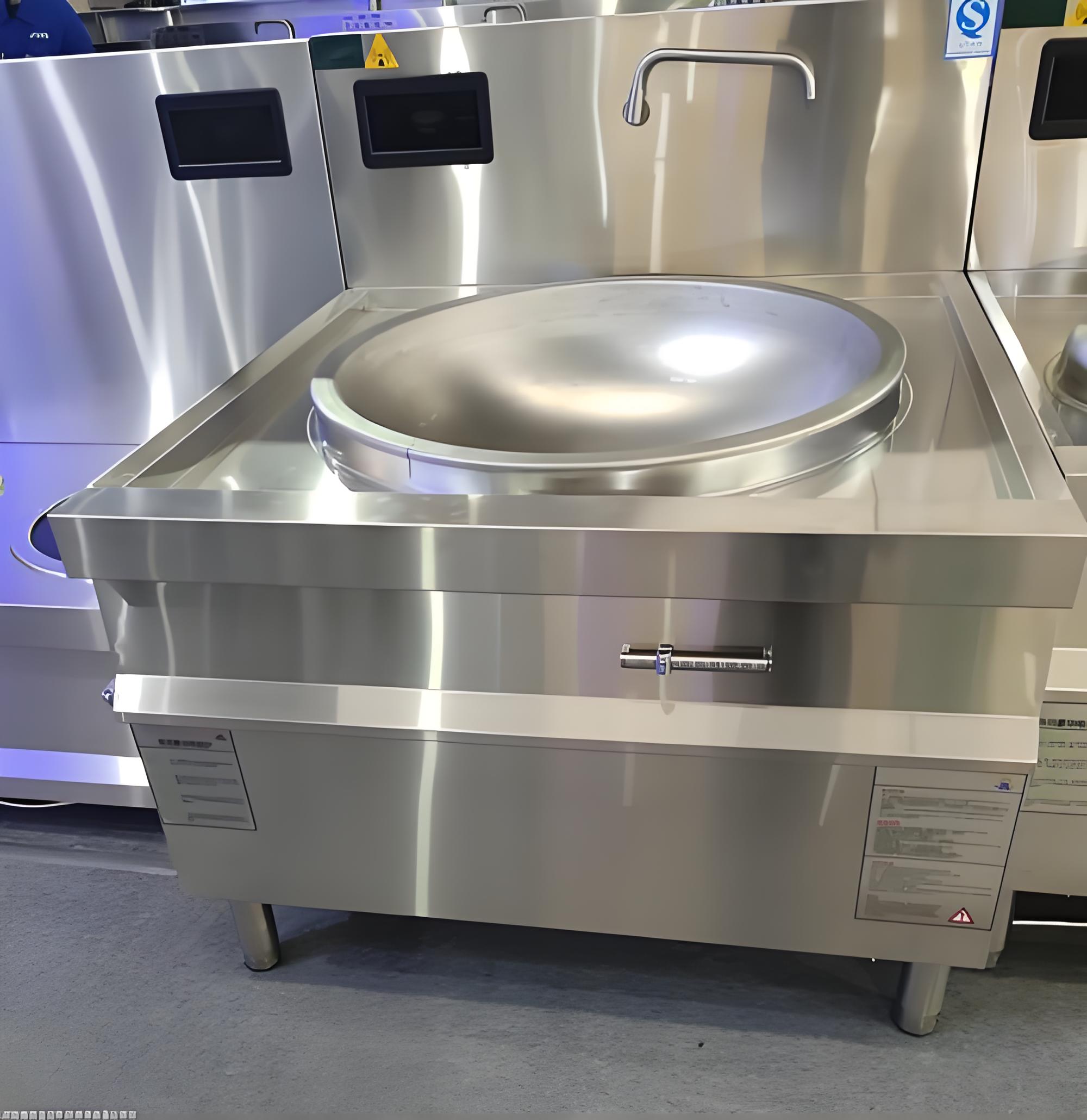As someone who has been in the kitchen appliance industry for many years, I receive many inquiries about high-power induction cooktops. When people search for this information, they are usually trying to figure out whether these cooktops are worth investing in for their kitchen. They may be considering upgrading their cooking equipment or building a new kitchen and want to know more about the benefits and prices of high-power induction cooktops. In this article, I will share my insights based on my extensive experience in this field.

Advantages of High – Power Induction Cookers
Rapid Heating
One of the most significant advantages of high – power induction cookers is their extremely fast heating speed. Traditional gas stoves rely on the combustion of gas to transfer heat to the cookware, which is a relatively slow process as the heat has to travel through the air and then reach the pot or pan. In contrast, high – power induction cookers use electromagnetic induction technology. When an induction – compatible cookware is placed on the cooker, an alternating magnetic field is generated, which induces eddy currents in the cookware itself, causing it to heat up directly.
For example, when boiling water, a high – power induction cooker can bring a pot of water to a boil in a fraction of the time it takes a gas stove. In a commercial kitchen setting, where time is of the essence and multiple dishes need to be prepared quickly, this rapid heating feature can significantly improve work efficiency. Even in a home kitchen, if you’re in a hurry to prepare a meal after a long day at work, the fast heating of a high – power induction cooker can save you a lot of time.
Precise Temperature Control
High – power induction cookers offer unparalleled precision in temperature control. They allow you to adjust the temperature in small increments, usually in ranges as fine as 10 – 20 degrees Celsius. This level of control is crucial for various cooking techniques.
For delicate dishes like sauces, where a slight change in temperature can affect the texture and consistency, the precise temperature control of an induction cooker ensures that you can maintain the ideal cooking conditions. When simmering a soup, you can set the temperature to a low and steady level, preventing the soup from boiling over or burning. In contrast, gas stoves often have a more limited range of temperature settings, and it can be challenging to achieve and maintain a specific low – temperature simmer.

The following table compares the temperature control features of high – power induction cookers and traditional gas stoves:
| Feature | High – Power Induction Cooker | Traditional Gas Stove |
|---|---|---|
| Temperature Adjustment Range | Wide, with fine increments (e.g., 10 – 20°C) | Relatively narrow, with larger temperature jumps |
| Low – Temperature Simmering | Excellent, can maintain a steady low heat | Difficult to achieve and maintain a consistent low heat |
| High – Temperature Cooking | Can reach high temperatures quickly and precisely | High temperatures can be achieved but may be less precise |
| Temperature Stability | Highly stable, less affected by external factors | Can be affected by air drafts and gas pressure fluctuations |
Energy Efficiency
High – power induction cookers are highly energy – efficient compared to traditional cooking methods. As mentioned earlier, with gas stoves, a significant amount of heat is lost to the surrounding environment as the gas burns. The heat has to travel through the air to reach the cookware, and during this process, a lot of energy is wasted.
Induction cookers, on the other hand, heat the cookware directly. Since there is no intermediate heat transfer through the air, almost all of the electrical energy is converted into heat in the cookware. Studies have shown that induction cookers can be up to 80 – 90% energy – efficient, while gas stoves typically have an efficiency of around 40 – 50%.
In a commercial kitchen that operates for long hours every day, the energy savings from using high – power induction cookers can be substantial over time. For home users, it also means lower electricity bills, making it a cost – effective choice in the long run.
Safety Features
Safety is a top priority in any kitchen, and high – power induction cookers excel in this area. Firstly, there is no open flame on an induction cooker. This eliminates the risk of fire hazards caused by gas leaks or accidental contact with flames, especially in households with children or pets.
Secondly, most high – power induction cookers are equipped with auto – shutoff features. If the cookware is removed from the cooker or if there is no cookware detected on the cooking surface for a certain period, the cooker will automatically turn off. This prevents overheating and potential damage to the cooker or the surrounding area.
Additionally, the cooking surface of an induction cooker remains relatively cool during and after cooking. Since the heat is generated in the cookware itself, the glass – ceramic surface only gets warm from the heat transferred from the cookware. This reduces the risk of burns when touching the cooking surface accidentally.

Easy to Clean
Cleaning a kitchen appliance can be a tedious task, but high – power induction cookers make it much easier. The smooth, flat surface of an induction cooker has no grates or burners like gas stoves. After cooking, you can simply wipe the surface with a damp cloth to remove any spills or food residues.
Since the surface doesn’t get as hot as a gas stove, food is less likely to burn and stick to it. This means there’s less stubborn dirt to deal with during cleaning. In a busy kitchen, whether it’s a commercial or home setting, the ease of cleaning can save a lot of time and effort, allowing you to focus more on the cooking process.
Price Considerations of High – Power Induction Cookers
Factors Affecting the Price
The price of high – power induction cookers can vary significantly depending on several factors:
Brand Reputation: Well – known brands with a long history in the kitchen appliance industry often charge higher prices for their products. These brands have built a reputation for quality, reliability, and after – sales service, and consumers are willing to pay a premium for their products. For example, brands like Miele, Bosch, and Siemens are known for their high – end kitchen appliances, including induction cookers, and their prices are generally higher compared to lesser – known brands.
Power Output: Higher – power induction cookers, which can generate more heat and are suitable for commercial or heavy – duty cooking, tend to be more expensive. The power output is usually measured in watts, and cookers with power ratings above 3000 watts are considered high – power models. These cookers require more advanced technology and components to handle the high electrical currents, which contributes to their higher cost.

Features and Functions: Induction cookers with additional features and functions, such as multiple cooking zones, touch – screen controls, programmable cooking modes, and smart connectivity, are priced higher than basic models. These extra features enhance the user experience and provide more convenience and versatility in the kitchen, but they also add to the manufacturing cost.
Build Quality and Materials: The quality of the materials used in the construction of the induction cooker also affects its price. Cookers made with high – quality glass – ceramic surfaces, durable heating elements, and sturdy frames are more expensive. These materials not only ensure the longevity of the cooker but also contribute to its overall performance and safety.
Price Range
The price range of high – power induction cookers is quite wide, starting from around 2000 or more for high – end, commercial – grade models with advanced features and high power ratings.
For home users who are looking for a reliable high – power induction cooker for regular cooking, a mid – range model priced between 1000 is usually a good choice. These models offer a balance of power, features, and build quality, and can meet the needs of most households.
Commercial kitchens, on the other hand, may need to invest in high – end, high – power induction cookers that can withstand heavy use and provide consistent performance. These cookers can cost several thousand dollars, but they are a necessary investment for a professional cooking environment.
Cost – Benefit Analysis
When considering whether a high – power induction cooker is expensive, it’s important to look at the cost – benefit ratio. While the initial purchase price may be higher compared to traditional gas stoves, the long – term benefits can outweigh the cost.
As mentioned earlier, high – power induction cookers are energy – efficient, which can lead to significant savings on electricity bills over time. Their durability and low maintenance requirements also mean that you won’t have to spend a lot of money on repairs or replacements in the future. Additionally, the improved cooking experience, precise temperature control, and safety features can enhance the overall value of using an induction cooker in your kitchen.

Related Q&A
Q: Are high – power induction cookers suitable for all types of cookware?
A: No, not all cookware is compatible with high – power induction cookers. Induction cookers require cookware made of ferromagnetic materials, such as cast iron or stainless steel with a magnetic bottom. Non – magnetic materials like aluminum, copper, and glass will not work on an induction cooker unless they have a special induction – compatible layer added to the bottom. You can easily check if your cookware is induction – compatible by placing a magnet on the bottom. If the magnet sticks, it should work on an induction cooker.
Q: How long do high – power induction cookers typically last?
A: The lifespan of a high – power induction cooker depends on several factors, including the brand, build quality, usage frequency, and maintenance. On average, a well – maintained high – power induction cooker can last between 8 and 15 years. Regular cleaning, avoiding overheating, and following the manufacturer’s instructions for use can help extend the lifespan of your induction cooker.
Q: Can high – power induction cookers be used in areas with unstable power supply?
A: High – power induction cookers require a stable power supply to operate properly. Fluctuations in voltage can affect the performance of the cooker and may even damage its components. If you live in an area with an unstable power supply, it’s recommended to use a voltage stabilizer or an uninterruptible power supply (UPS) to protect your induction cooker. Additionally, you should check the power requirements of the cooker before purchasing to ensure that your electrical system can support it.
In conclusion, high – power induction cookers offer numerous advantages in terms of heating speed, temperature control, energy efficiency, safety, and ease of cleaning. While their prices can vary depending on various factors, the long – term benefits make them a worthwhile investment for both home and commercial kitchens. When choosing a high – power induction cooker, consider your specific needs, budget, and the features that are most important to you to make an informed decision.



